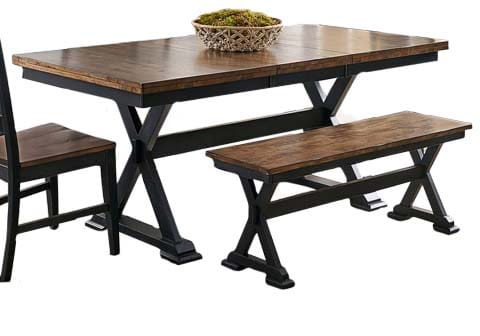Dining Room Furniture Measuring Guide
Choosing the Right Size Dining Table
When shopping for a new dining table, it’s important that you choose one that complements the size of your dining room. Tables that are too large can overwhelm a space and leave little room for much else, while tables that are too small can feel cramped and inadequate. Before you make a purchase, read our instructions below on how to accurately measure for a new dining table.
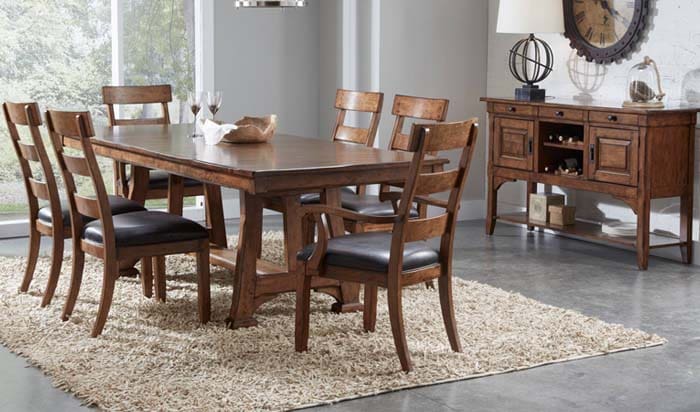
Determine your needs
To fully understand your needs, take a good look at your household. Do you have a large family that requires 8 or more seats at your table, or a small family that only needs 2 or 4 chairs? Do you love to entertain? Is it important that you also have room for a buffet or china cabinet in your dining area? All of these things are key factors in determining the table size that will work best for you.
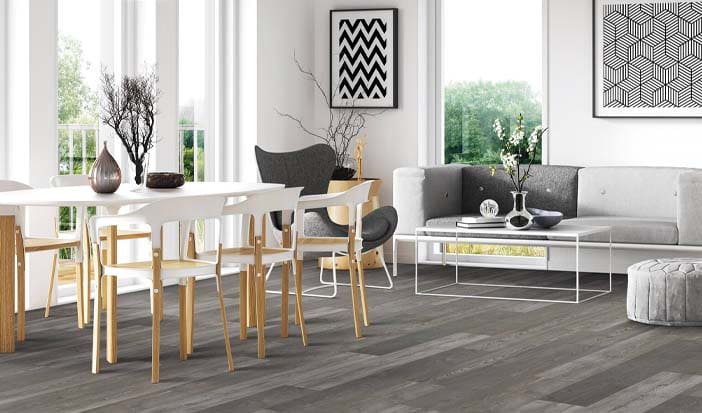
Measure the space
Before purchasing a new table, you’ll need to determine how much space you have to work with. Use a measuring tape to find the length and width of the dining room, then subtract 6-feet from each measurement. This equation will give you the maximum length and width for your dining table, while leaving 3-feet of space between the table and walls so people can easily pull out their chairs. If there are other pieces of furniture in the space, be sure to measure 3-feet out from them when determining the overall dimensions of the room.
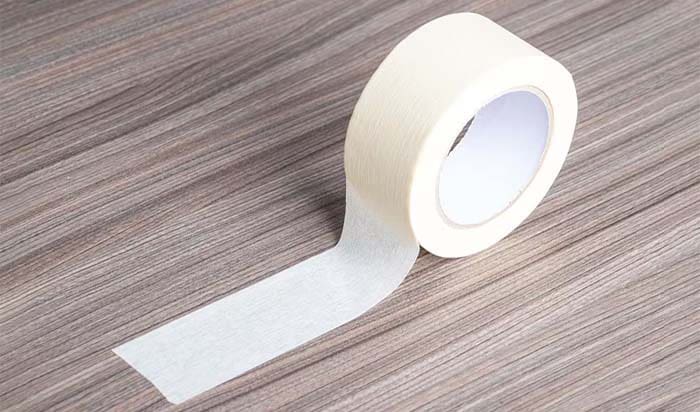
Create an Outline
If you still need help envisioning how a new table will look in your dining room, consider creating an outline. With the tables overall dimensions in mind, use masking tape to make a square or circle on the floor. The outline does not have to be precise, it’s simply meant to serve as a visual reference to give you a better idea of size and placement. You can then see how close the table outline is to the walls, doorways and other furniture in the room.
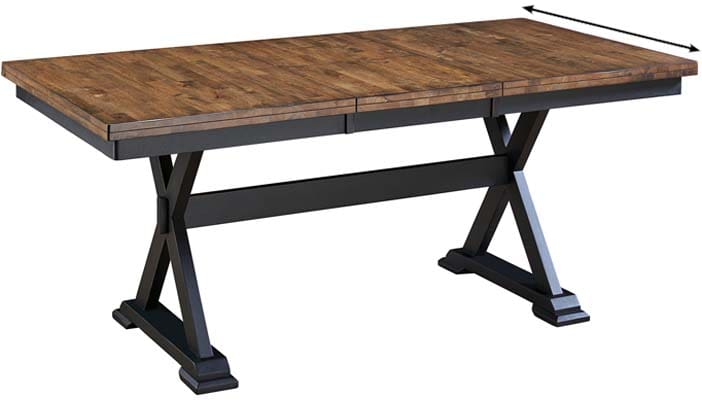
Table width
To find the width of a table, measure from side to side at the widest point of the table. If the table is round, measure straight across the middle of the table. The width of a table is an important measurement because it affects several things, including the flow of conversation, the passing of food, and the amount of serving pieces that can fit in the center. To be both functional and comfortable, a dining table should be between 36” and 48” wide.
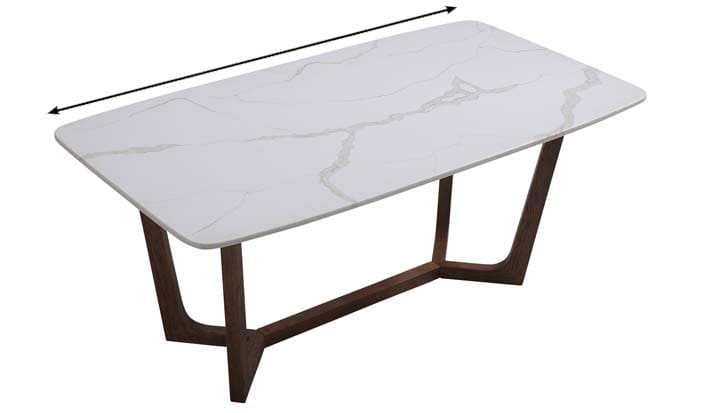
Table length
To find the length of a table, measure the longest part of the table from end to end. This measurement will give you an idea of appropriate seating capacity. For optimum comfort, there should be a minimum of 24” between each person at the table. If you are also purchasing chairs, the length of the table will dictate how many chairs your table can accommodate. When measuring, be sure to factor in the table legs, which take up some space on both sides.
A Few Things to Consider
Seating:
Personal comfort is a key factor in whether or not your guests will have an enjoyable dining experience. Preferably, there should be 24” to 30” of space between each chair at your dining table. This will give adequate space for place settings, help prevent elbows from touching during meals, and allow guests to move their chairs without hitting the person seated next to them.
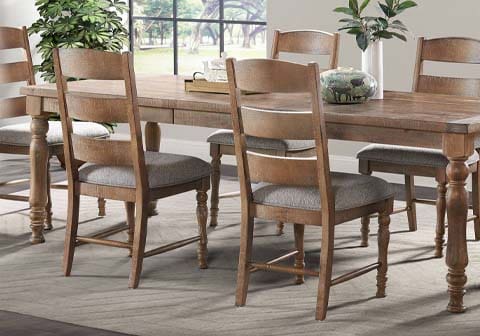
Doorways:
If you have doorways leading to your dining room, be sure to leave at least 4-feet between the doorway and the dining table. Make sure doors can fully open without hitting the table, chairs, or any other furniture in the room. Leaving adequate space between the table and any doorways will also help maintain a clear pathway in and out of the room.
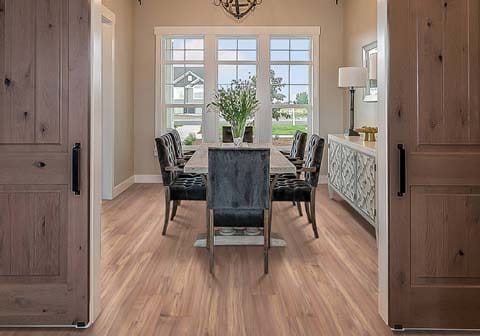
Rugs:
Adding an area rug to your dining room can add warmth, help soften noise and aesthetically tie the whole room together. A dining room rug should be large enough to accommodate your entire dining table and chairs, and still have a wide border of rug, preferably 24”, around the outside of the furniture. This will allow guests to comfortably pull out their chair and still have it remain on the rug. If you find that your dining room is not spacious enough to accommodate the rug size you need, simply purchase the largest rug that will suit the space.
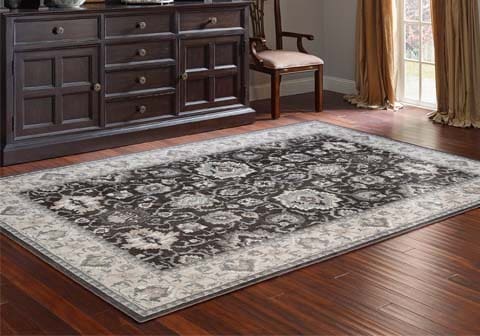
How to Choose the Right Size Dining Chair
A dining room should be an inviting space that encourages people to relax and stay a while. That’s why it’s important to choose dining chairs that are both comfortable and aesthetically pleasing. Whether you’re looking to replace your current chairs or purchase a whole new dining set, we have a few tips and suggestions to help you find the perfect dining chair.
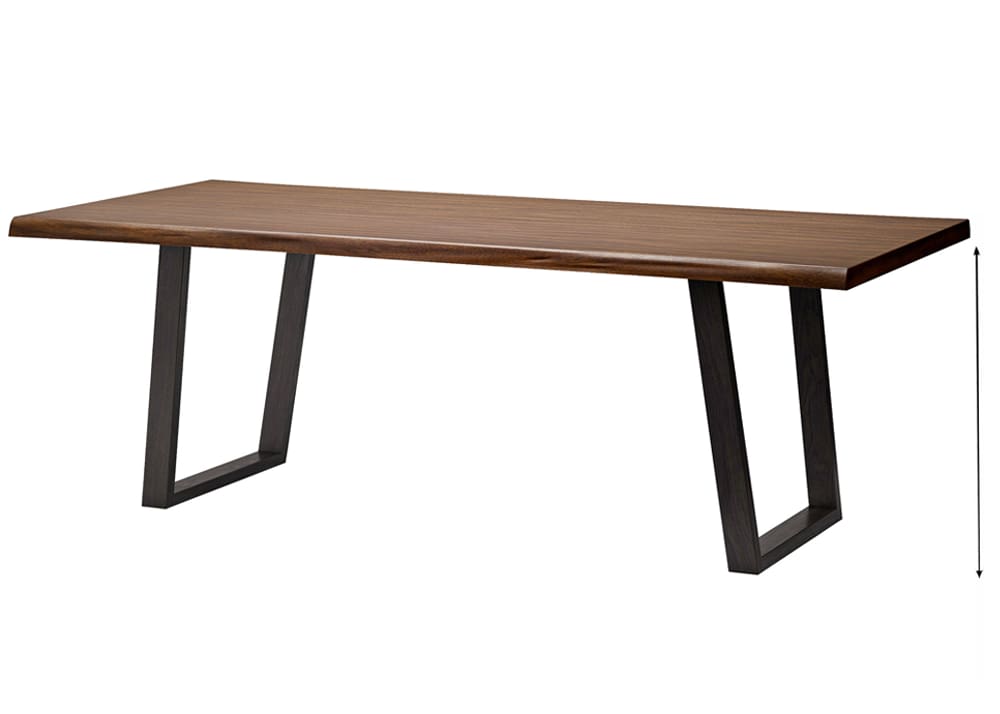
Measure the table
Before purchasing new chairs, you need to get an idea of how much space you’re working with. Start by determining the exact height of your dining table, which is measured from the floor to the tabletop. For tables with an apron, measure from the floor to the bottom of the apron.
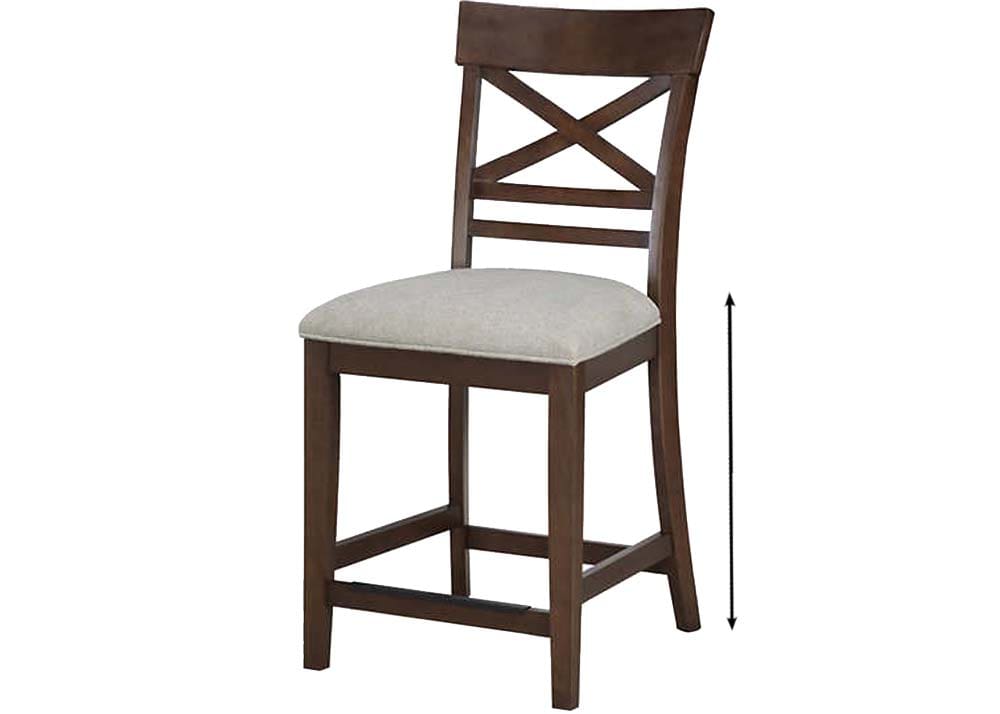
Seat Height
Seat height is important because it determines if a chair will fit appropriately under a table. To find the seat height of a chair, measure from the floor to the top of the seat. We recommend you allow 10” to 12" between the tabletop and the seat of the chair. For tables with an apron, allow a minimum of 6" between the apron and the seat of the chair. This spacing will ensure that your guests are comfortable, and that the chair will easily slide underneath the table. Note, if you’re purchasing a chair with arms, be sure the arm height is at least 6” lower than the tabletop or apron.
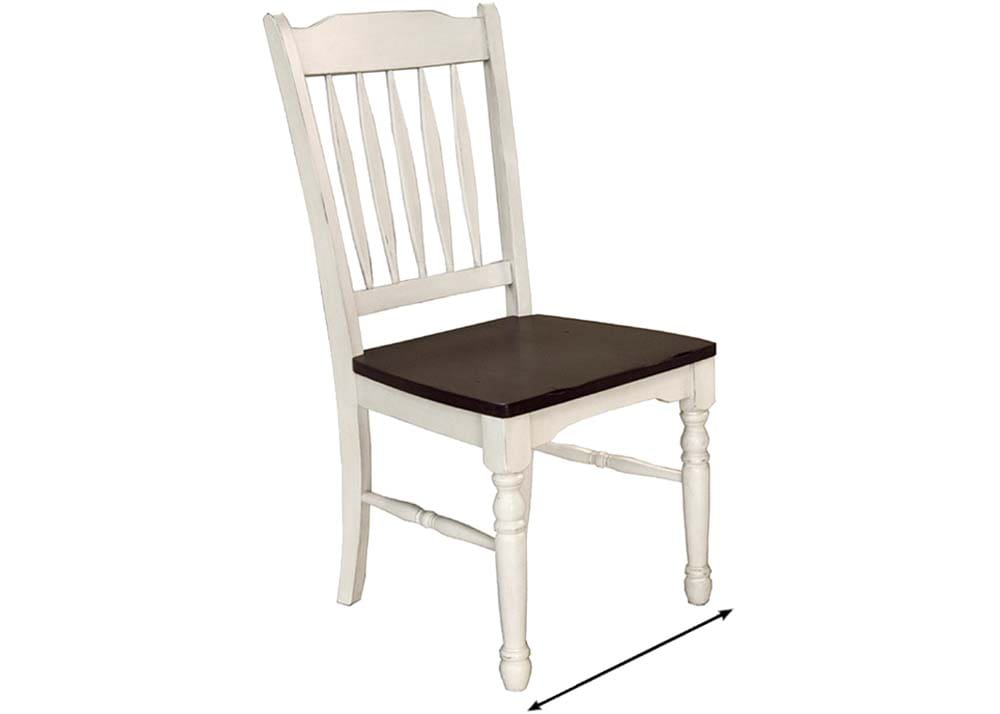
Seat Width
Seat width is important because it determines the number of chairs your table can accommodate. To find the seat width of a chair, measure the widest part of the seat from one side to the other. If the chair has arms, remember to add a few inches to that measurement. In order for guests to feel comfortable, you’ll also need to add at least 12” of space between each chair at the table. This extra space will prevent overcrowding and make it easier to get up and down from the table. To calculate the exact number of chairs that will fit at your table, take the seat width plus 12” extra spacing and then compare that length to the table.
A Few Things to Consider
Dining chairs with arms
Dining chairs with arms require more space than a standard chair, which is why they are typically placed only at the head and foot of the table. If you are considering purchasing a chair with arms, be sure the arm height is at least 6” lower than the tabletop or apron.
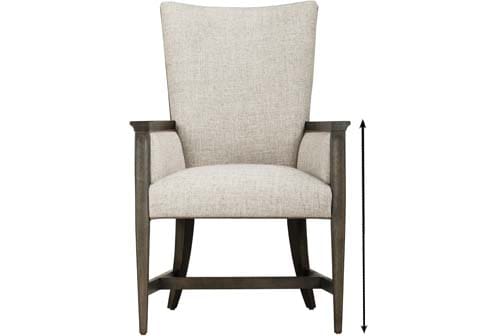
Counter height tables
Counter height tables are much higher than standard dining tables. They run approximately 34” to 36” tall, whereas standard dining tables are typically 28 to 32” tall. If you are purchasing chairs or stools to go with a counter height dining table, they should sit approximately 24” to 26” high.
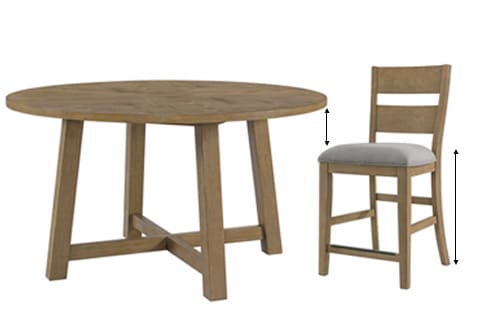
Bar height counters
Bar height counters are approximately 41” to 43” tall. If you are purchasing chairs or stools to go with a bar height counter or dining table, they should sit approximately 29” to 32” high. The measurement from your stool seat to the bottom of your countertop should be 10”-12”.
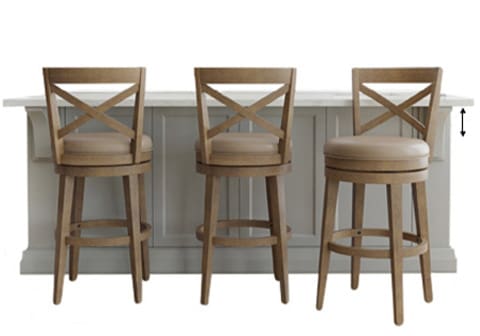
Bench seating
Dining benches, sometimes called banquettes, have become a very popular trend for casual dining. If you have limited space in your home or have young children, bench seating is a great option. Benches are space-saving and can accommodate more people than individual chairs. When not in use, they can be conveniently pushed under the table.
